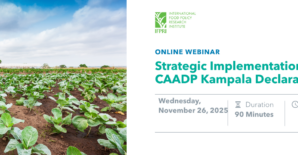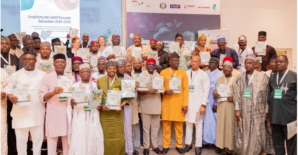Third in a blog series examining the potential consequences of the recently-imposed U.S. tariffs for global agrifood trade. Read the first post here and the second here.
Current U.S. trade policies—though primarily focused on major global players including China, the European Union, and North American partners Canada and Mexico—also have economic consequences for smaller countries and regions around the world. In sub-Saharan Africa (SSA), these impacts will be felt both directly, through newly imposed tariffs, and indirectly, as collateral damage in a potential trade war between the world’s largest economies.
As the United States rolls out a new wave of tariff increases, SSA countries must navigate a newly challenging trade environment. The region has long benefited from preferential access to U.S. markets—in particular, the 2000 African Growth and Opportunity Act (AGOA) has exempted 1,800 SSA products from import duties. Yet now, many African exports are subject to a flat 10% tariff, effectively eliminating one of the few trade advantages the region held for the U.S. market.
At a time when African food security, inflation, and economic resilience are already under immense pressure, the erosion of these trade preferences deepens SSA’s vulnerability and raises urgent questions about the continent’s place in an increasingly fragmented global trade system.
Yet initially at least, our modeling suggests that direct impacts of the new U.S. tariffs on SSA countries’ agrifood trade will likely be relatively small—reflecting the already limited trade between the two. Based on FAOSTAT data, SSA bilateral agricultural trade with the U.S. totaled $3.4 billion in 2023—only 3% of the continent’s overall agricultural trade.
Nonetheless, the tariffs could have potentially significant indirect impacts on agricultural trade flows between SSA countries and other countries and regions (e.g., the EU) with trade more significantly disrupted by the new tariffs. Particularly affected are export-sensitive crops including coffee and tea, fruits and vegetables, and processed foods.
To view the full blog post, visit IFPRI.org. This post was first published there.



